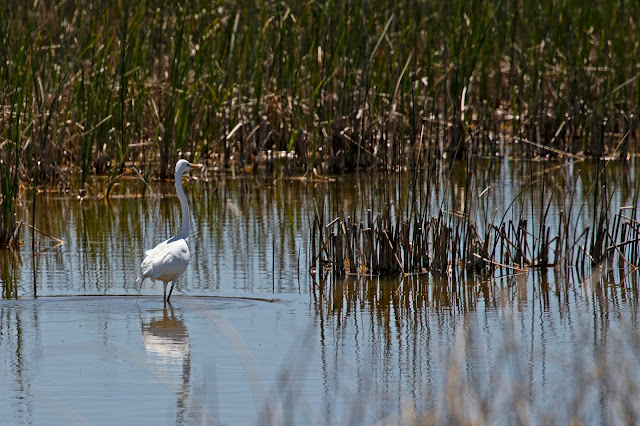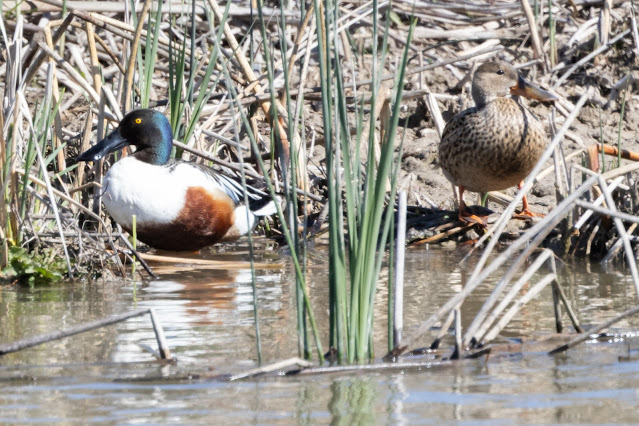This post features four different species, with four shots of each. Bird IDs and information follow the images.
 |
Great Egret: Tall, long-legged wading bird with long, s-curved necks and long, dagger like orange bills.
|
 |
Great Egret: Elegant wetland bird, smaller and more svelt than a Blue Heron.
|
 |
Great Egret: Hunt by standing immobile or wading through wetlands to capture fish with a deadly jab of their bill.
|
 |
Great Egret: Flies slowly and elegantly, with just two wingbeats per second. Cruising speed of about 25 mph.
|
 |
Snowy Egret: Looks a lot like the Great Egret, right? A giveaway difference is its black bill.
|
 |
Snowy Egret: Males and females take turns incubating their eggs, and later, caring for the hatchlings. Chicks usually fledge after two weeks.
|
 |
Snowy Egret: Sometimes mates with other heron species (Tricolored Herons, Little Blue Herons, Cattle Egrets), producing hybrid offspring.
|
 |
Snowy Egret: Wingspan of 41 inches. Holds back its head and neck in a tight s-curve in flight. Often flies with rapid wingbeats and in flocks when returning to roosting areas in the evening.
|
 |
Yellow-headed Blackbird: Note golden head, with white patch on wings. Nests in reeds directly over the water of wetlands.
|
 |
Yellow-headed Blackbird: Larger and more dominant over the Red-winged Blackbird, especially for prime nesting spots.
|
 |
Yellow-headed Blackbirds: Pleistocene fossils of this species have been dug up in California, New Mexico, and UTAH!
|
 |
Yellow-headed Blackbird: May visit backyard feeders to eat seeds and grains, including sunflower seeds. I watched this one dart its head up again and again to catch and eat those black midges.
|
 |
White-faced Ibis: Dark wading bird with a long, curved-down bill.
|
 |
White-faced Ibis: Breeding adults have reddish legs and a bare patch of pink skin in front of the eye, bordered in white.
|
 |
White-faced Ibis: Note the beautiful metallic green and bronze wings.
|
 |
| White-faced Ibis: Morning wing-spreading provides a means of absorbing solar energy and passively raising their temperature to a daytime level. |



















Comments